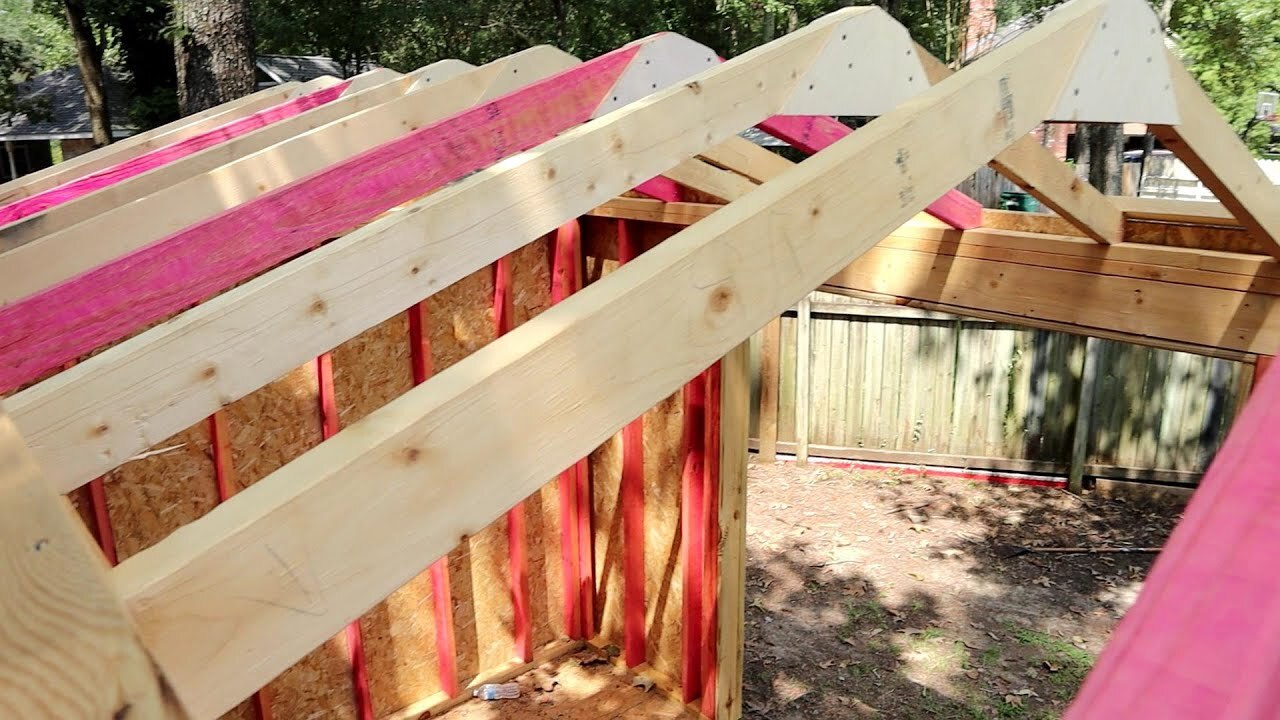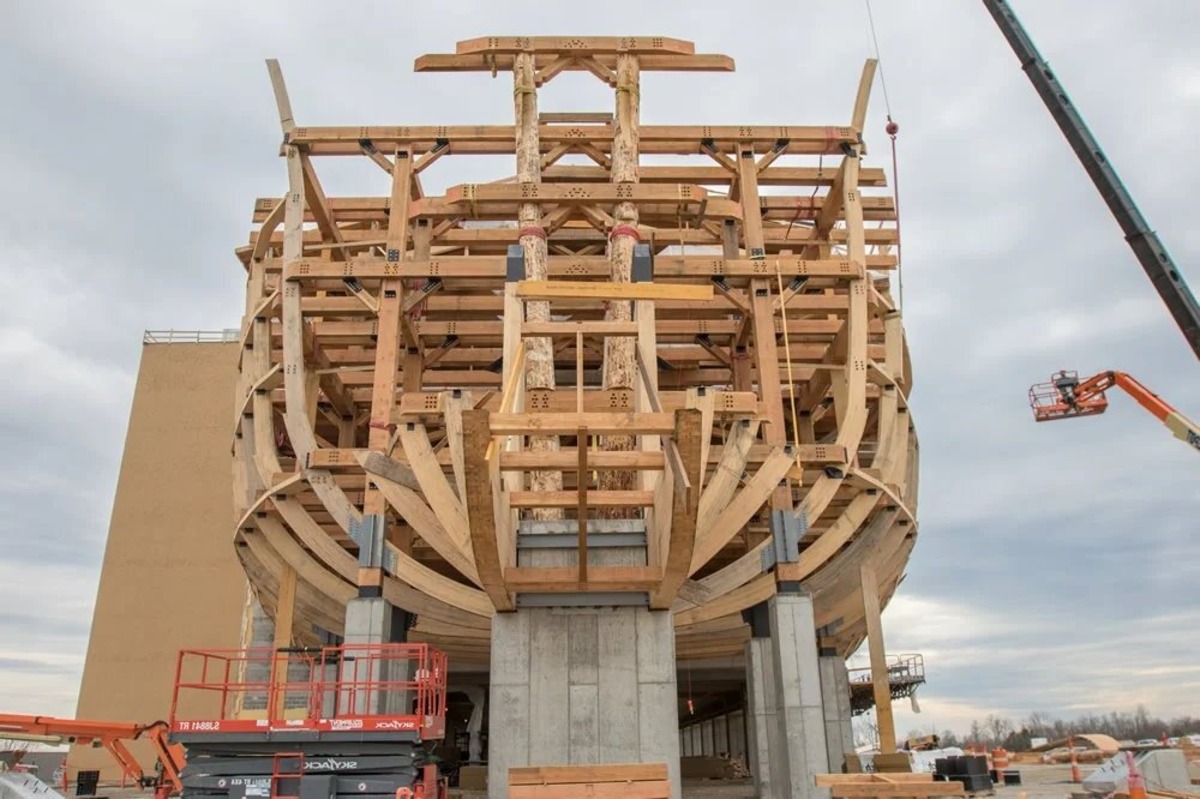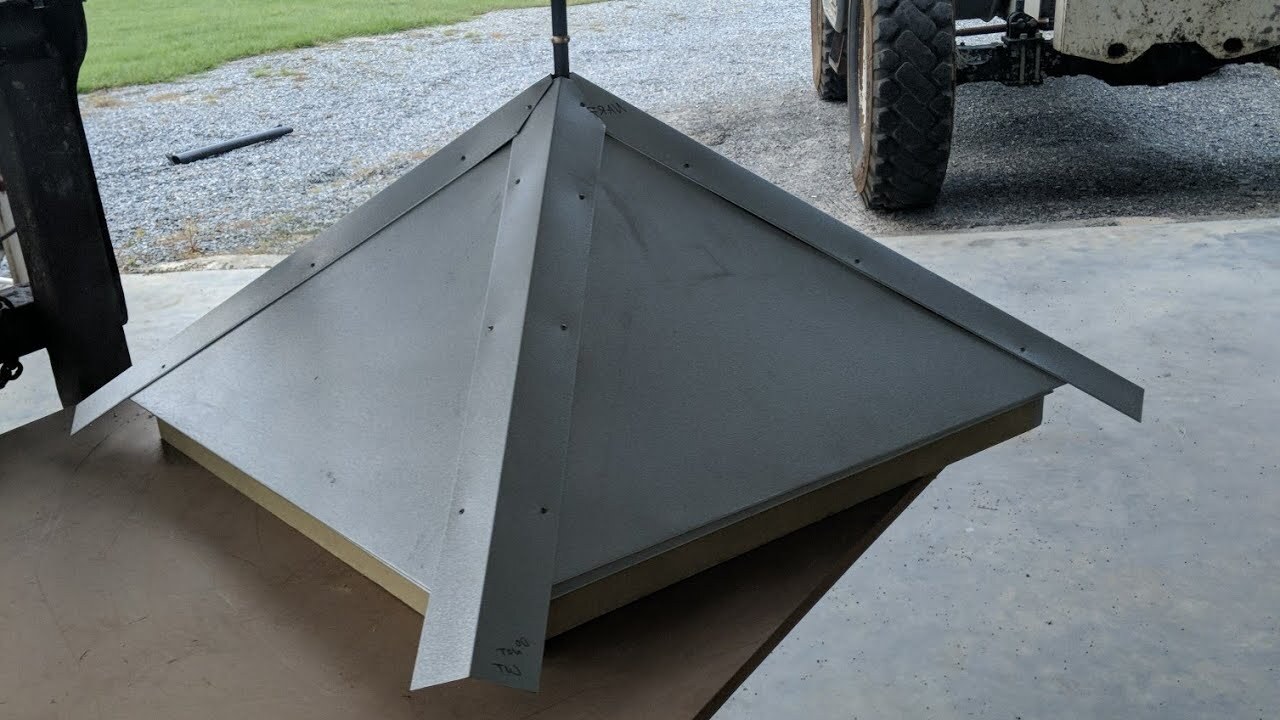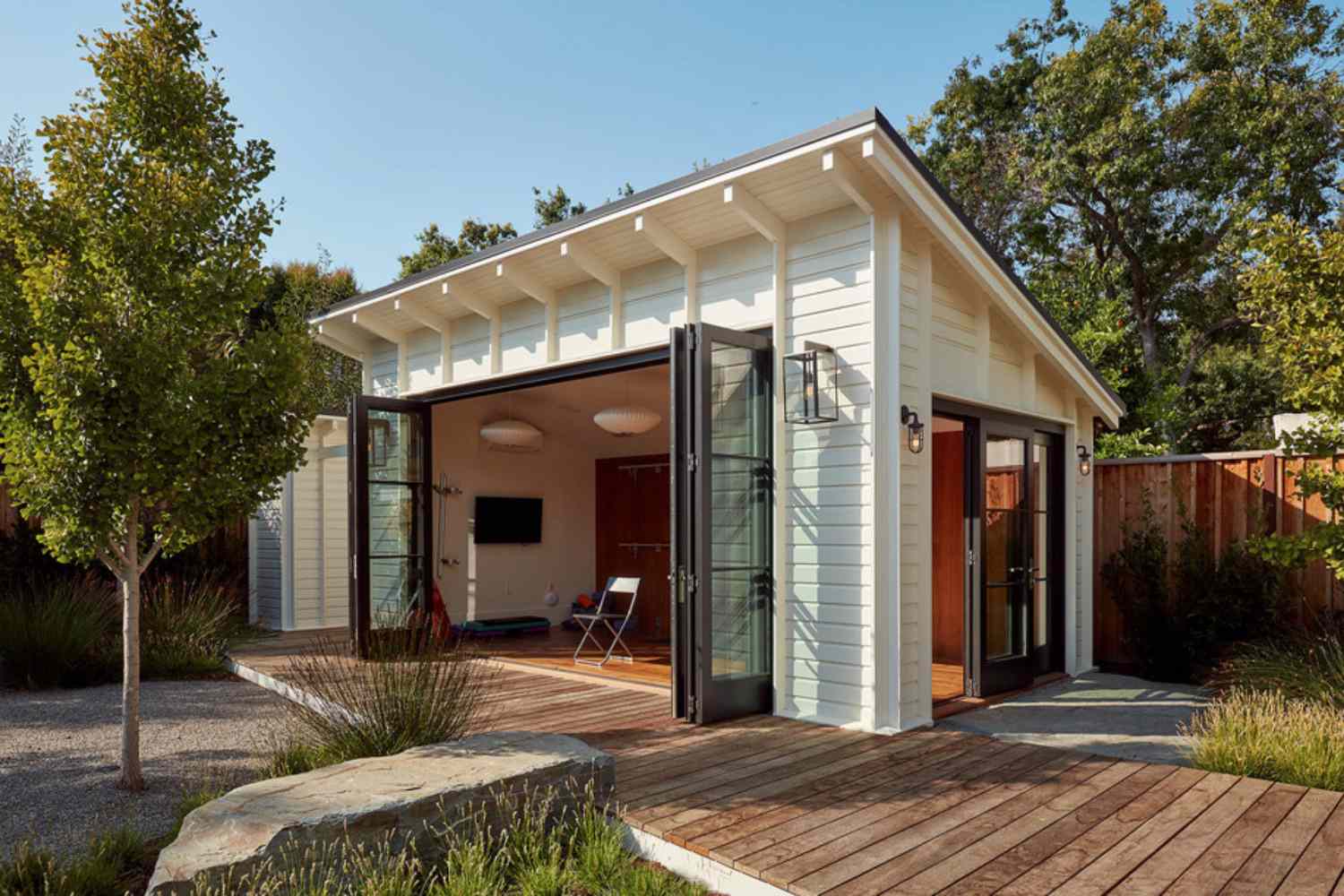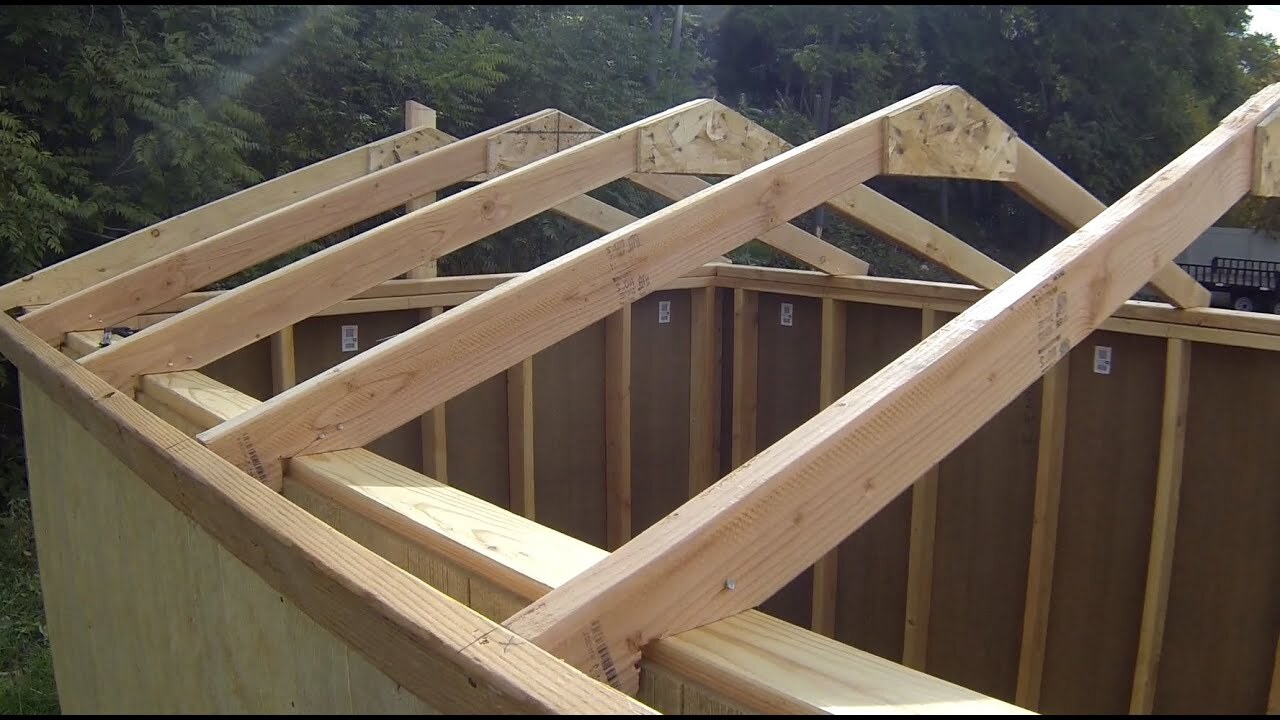Home>Create & Decorate>DIY & Crafts>How To Build An Earthship
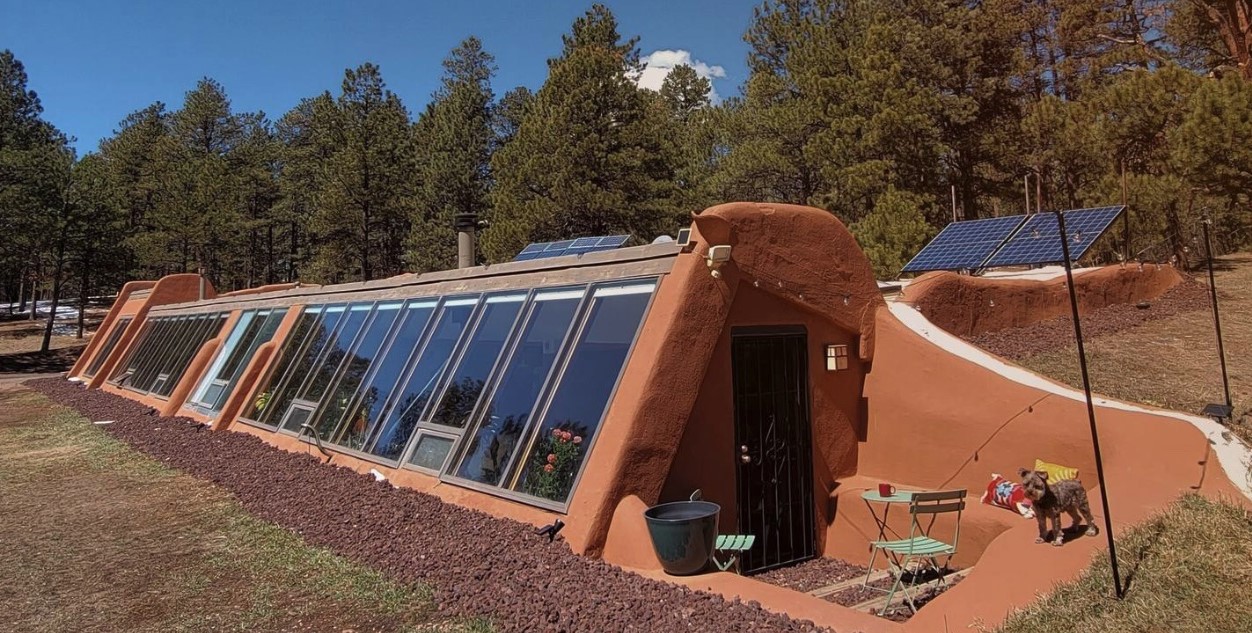

DIY & Crafts
How To Build An Earthship
Published: May 28, 2024

Content Creator specializing in woodworking and interior transformations. Caegan's guides motivate readers to undertake their own projects, while his custom furniture adds a personal touch.
Learn how to build an Earthship with our comprehensive DIY & Crafts guide. Discover sustainable building techniques and eco-friendly materials.
(Many of the links in this article redirect to a specific reviewed product. Your purchase of these products through affiliate links helps to generate commission for Twigandthistle.com, at no extra cost. Learn more)
Introduction
So, you've decided to take the plunge and build your very own Earthship. Congratulations! An Earthship is a sustainable and self-sufficient home that utilizes natural and recycled materials to create a comfortable living space. In this article, we will guide you through the process of building an Earthship, from understanding the core principles to the finishing touches of interior design. Whether you're a seasoned builder or a DIY enthusiast, this comprehensive guide will equip you with the knowledge and skills needed to embark on this eco-friendly and rewarding journey. Let's get started!
Read more: How To Build A Battlebot
Understanding Earthship Principles
-
Passive Solar Design: Earthships are designed to harness the natural energy of the sun to heat and cool the interior spaces. The orientation of the building, along with strategically placed windows and thermal mass, allows for maximum solar gain in the winter and shading in the summer.
-
Thermal Mass: One of the key principles of an Earthship is the use of thermal mass to regulate indoor temperatures. Materials such as tires, adobe, and rammed earth are used to create walls that absorb and store heat, releasing it gradually to maintain a comfortable climate.
-
Natural Ventilation: Earthships are built to encourage natural airflow, reducing the need for mechanical heating and cooling. Through the use of ventilation tubes and operable windows, fresh air is circulated throughout the living spaces, promoting a healthy indoor environment.
-
Water Harvesting and Recycling: Another fundamental principle of Earthship design is the collection and reuse of rainwater. This is achieved through the integration of a rooftop water catchment system, which directs water into cisterns for storage and later use in the household.
-
Sustainable Materials: Earthships prioritize the use of sustainable and recycled materials, such as reclaimed wood, glass bottles, and aluminum cans. By repurposing these materials, Earthship construction minimizes its environmental impact and reduces the demand for new resources.
-
Renewable Energy: To further enhance self-sufficiency, Earthships often incorporate renewable energy sources such as solar panels and wind turbines. These systems provide power for lighting, appliances, and other electrical needs, making the home independent of traditional utility services.
By understanding and implementing these core principles, you can create an Earthship that not only reduces its ecological footprint but also provides a comfortable and harmonious living environment.
Site Selection and Preparation
-
Assess the Land: Before breaking ground on your Earthship, it's crucial to carefully assess the chosen site. Look for a location with optimal solar exposure, as well as access to prevailing winds for natural ventilation. Additionally, consider the soil composition and drainage patterns to ensure the stability and suitability of the land for construction.
-
Permit and Zoning: Check with local authorities to understand the zoning regulations and obtain the necessary permits for building an Earthship. Some areas may have specific requirements or restrictions related to sustainable building practices, so it's essential to be informed and compliant with the local regulations.
-
Clearing and Leveling: Once the site is selected and the necessary permits are secured, the next step is to clear the land and prepare a level foundation for the Earthship. This may involve removing any vegetation, rocks, or debris, and leveling the ground to create a stable base for construction.
-
Utility Access and Off-Grid Considerations: Determine the availability of utilities such as water, electricity, and sewage on the site. If opting for an off-grid Earthship, plan for alternative solutions such as rainwater harvesting, solar power, and composting toilets. Understanding the off-grid requirements will influence the design and systems integration during the construction phase.
-
Soil Testing and Analysis: Conduct a thorough analysis of the soil to ensure its suitability for building thermal mass walls and supporting the structural integrity of the Earthship. Soil composition and compaction are critical factors that can impact the stability and performance of the construction.
-
Erosion Control and Landscaping: Implement erosion control measures to protect the site during and after construction. Consider incorporating landscaping elements that complement the Earthship design, such as native plants and natural barriers to enhance the overall sustainability and aesthetics of the property.
-
Foundation Preparation: Depending on the specific Earthship design, prepare the foundation for the thermal mass walls and greenhouse structure. This may involve excavation, compacting the soil, and laying the groundwork for the tire walls and other foundational elements.
By carefully selecting and preparing the site for your Earthship, you can lay the groundwork for a sustainable and resilient home that harmonizes with its natural surroundings.
Building the Thermal Mass Walls
Building the thermal mass walls is a critical phase in constructing an Earthship, as these walls play a pivotal role in regulating the indoor temperature and providing structural stability. Here's a detailed breakdown of the process:
-
Tire Wall Construction: The use of recycled automobile tires packed with compacted earth is a signature feature of Earthship construction. Begin by arranging the tires in a staggered pattern to form the walls, securing them in place with wire and ensuring a level alignment. As the tire walls are built up, they create a substantial thermal mass that absorbs and retains heat, contributing to the passive solar heating of the interior spaces.
-
Earth Ramming and Compaction: Once the tires are in place, fill them with a mixture of earth and gravel, compacting the material to achieve a dense and solid core. This process not only reinforces the structural integrity of the walls but also enhances their thermal mass properties, allowing for efficient heat storage and distribution throughout the Earthship.
-
Window and Door Openings: As the tire walls take shape, incorporate the necessary openings for windows and doors. Carefully frame these openings to accommodate the fixtures while maintaining the integrity of the thermal mass walls. Proper sealing and insulation around the openings are essential to prevent heat loss and ensure energy efficiency.
-
Plastering and Finishing: To protect the tire walls from weathering and provide a finished surface, apply a layer of earthen plaster or other suitable materials. The plaster not only enhances the aesthetic appeal of the walls but also serves as a protective barrier, shielding the thermal mass from moisture and external elements.
-
Integration with Greenhouse and Interior Spaces: The thermal mass walls extend into the interior of the Earthship, forming a continuous element that contributes to the overall climate control. Integrate the thermal mass walls with the greenhouse structure and interior partitions, ensuring a seamless flow of heat and maintaining a comfortable temperature gradient throughout the living spaces.
By meticulously constructing the thermal mass walls, you establish the foundation for an Earthship that embodies the principles of sustainability, energy efficiency, and thermal comfort. These walls serve as a testament to the innovative and eco-conscious approach of Earthship design and construction.
Constructing the Greenhouse
The greenhouse is a distinctive feature of an Earthship, serving multiple purposes such as food production, climate regulation, and aesthetic enhancement. Here's a comprehensive guide to constructing the greenhouse as an integral part of your Earthship:
-
Foundation and Framing: Begin by laying the foundation for the greenhouse, ensuring it is structurally sound and level. The framing of the greenhouse can be constructed using a combination of recycled materials such as wood, metal, or PVC pipes. The design should accommodate ample glazing to allow for maximum sunlight penetration while providing structural support for the roof and walls.
-
Glazing and Insulation: Select high-quality glazing materials such as polycarbonate panels or greenhouse-grade glass to enclose the structure. Proper insulation is essential to retain heat and create a favorable environment for plant growth. Consider incorporating operable vents or windows to facilitate natural ventilation and regulate the internal temperature.
-
Integrated Planters and Irrigation: Integrate raised planters or growing beds within the greenhouse to cultivate a variety of crops and vegetation. Implement an efficient irrigation system that utilizes rainwater collected from the Earthship's roof or other sustainable water sources. This closed-loop approach aligns with Earthship principles of water conservation and self-sufficiency.
-
Solar Exposure and Shading: Position the greenhouse to optimize solar exposure throughout the day, taking into account the seasonal variations in sunlight angles. Implement shading mechanisms such as retractable screens or shade cloth to prevent overheating during the warmer months while allowing for adequate light transmission.
-
Climate Control and Thermal Mass: Leverage the thermal mass properties of the Earthship by extending the greenhouse into the interior living spaces. This integration allows for the exchange of heat between the greenhouse and the adjacent areas, contributing to the overall thermal regulation of the home. Consider incorporating thermal mass elements such as cob or adobe walls within the greenhouse for enhanced temperature stability.
-
Functional and Aesthetic Elements: Enhance the functionality and visual appeal of the greenhouse by incorporating features such as a rainwater collection system, shelving for potted plants, and a dedicated space for composting organic waste. Embrace creative design elements that harmonize with the Earthship's overall aesthetic, fostering a seamless connection between sustainable living and natural abundance.
By meticulously constructing the greenhouse as an integral component of your Earthship, you create a thriving environment for plant cultivation, passive climate control, and visual harmony. The greenhouse embodies the ethos of self-sufficiency and ecological balance, enriching the living experience within the Earthship.
Read more: How To Build A Trailer
Installing the Water and Sewage Systems
-
Rainwater Harvesting: Begin by setting up a comprehensive rainwater harvesting system to capture and store precipitation for household use. This involves installing gutters and downspouts on the roof of the Earthship to direct rainwater into storage cisterns. Utilize filtration systems to remove debris and impurities, ensuring the collected water is suitable for various domestic applications.
-
Water Filtration and Purification: Implement a multi-stage water filtration and purification system to ensure the quality and potability of the harvested rainwater. Utilize sediment filters, activated carbon filters, and UV sterilization units to remove contaminants and pathogens, providing a reliable and sustainable source of clean water for drinking, cooking, and bathing.
-
Greywater Recycling: Integrate a greywater recycling system to treat and reuse wastewater from sinks, showers, and laundry. Utilize constructed wetlands, sand filters, or biological treatment units to purify greywater, allowing it to be redirected for irrigation, toilet flushing, or other non-potable uses. This closed-loop approach minimizes water wastage and reduces the strain on conventional sewage systems.
-
Composting Toilets: Embrace the use of composting toilets as an eco-friendly alternative to traditional sewage systems. These systems facilitate the decomposition of human waste into nutrient-rich compost, which can be safely utilized for fertilizing non-edible plants. Composting toilets eliminate the need for water-intensive flushing and contribute to sustainable nutrient cycling within the Earthship.
-
Sustainable Water Management: Emphasize sustainable water management practices by incorporating water-efficient fixtures, such as low-flow faucets, showerheads, and dual-flush toilets. Implement water-saving strategies, such as capturing excess heat from shower water to preheat incoming cold water, further enhancing the overall energy and water efficiency of the Earthship.
-
Regulatory Compliance and Safety: Ensure that the installation of water and sewage systems complies with local regulations and safety standards. Obtain any necessary permits and inspections to validate the proper functioning and environmental impact of the systems. Prioritize the responsible and ethical management of water resources, aligning with the principles of sustainability and ecological stewardship.
By meticulously installing water and sewage systems that prioritize efficiency, conservation, and environmental responsibility, you establish a self-sufficient and ecologically conscious infrastructure within the Earthship. These systems exemplify the integration of sustainable practices into everyday living, fostering a harmonious relationship between human habitation and the natural environment.
Creating the Roof and Rainwater Harvesting System
The construction of the roof and rainwater harvesting system is a pivotal aspect of building an Earthship, as it facilitates the collection and utilization of precious rainwater for various household needs. Here's a detailed exploration of the process:
Roof Design and Material Selection
Begin by designing the roof to maximize rainwater capture while complementing the overall aesthetic and functionality of the Earthship. Consider utilizing a sloped or butterfly roof design to channel rainwater towards designated collection points. Select durable and weather-resistant roofing materials such as metal, recycled rubber, or synthetic membranes to ensure longevity and efficient water shedding.
Gutter Installation and Layout
Install gutters along the edges of the roof to capture and direct rainwater towards the designated collection system. Ensure that the gutters are securely fastened and sloped to facilitate proper drainage. Strategically position downspouts to convey the collected rainwater to storage cisterns or filtration systems, minimizing wastage and optimizing water utilization.
Read more: How To Build A Sauna
Rainwater Collection Cisterns
Integrate one or more rainwater collection cisterns into the design of the Earthship to store the harvested rainwater. These cisterns can be constructed from durable materials such as concrete, polyethylene, or ferrocement, providing a reliable reservoir for rainwater storage. Consider the appropriate sizing of the cisterns based on the anticipated water demand and the local precipitation patterns.
Filtration and Purification Systems
Implement a comprehensive filtration and purification system to treat the harvested rainwater before it is utilized for domestic purposes. Utilize sediment filters, carbon filters, and UV sterilization units to remove impurities and pathogens, ensuring that the collected rainwater meets quality standards for drinking and other household uses. Embrace sustainable and low-maintenance filtration technologies to enhance the efficiency and reliability of the system.
Backup Water Supply Considerations
Incorporate contingency measures for maintaining a reliable water supply during periods of limited rainfall. Explore options such as integrating a well or accessing a community water source as a supplementary water supply. By diversifying the water sources, the Earthship can remain resilient and self-sufficient, even in challenging environmental conditions.
Maintenance and Monitoring Protocols
Establish regular maintenance and monitoring protocols to ensure the optimal performance and longevity of the rainwater harvesting system. Periodically inspect the roof, gutters, and cisterns for debris accumulation, leaks, or structural integrity. Implement proactive measures to safeguard the system against potential contaminants and environmental factors that may impact water quality.
By meticulously creating the roof and rainwater harvesting system, you establish a sustainable and self-reliant water supply infrastructure within the Earthship. This integration of rainwater harvesting aligns with the principles of resource conservation and ecological stewardship, embodying the ethos of sustainable living and environmental harmony.
Read more: How To Build A Trebuchet
Finishing Touches and Interior Design
The finishing touches and interior design of an Earthship play a crucial role in creating a harmonious and inviting living environment that reflects the principles of sustainability and aesthetic appeal. Here's a comprehensive exploration of the key elements involved in this phase:
Sustainable Materials and Finishes
Embrace the use of sustainable and locally sourced materials for interior finishes, such as earthen plasters, natural paints, and reclaimed wood. These materials not only contribute to a healthy indoor environment but also align with the eco-friendly ethos of the Earthship. Consider incorporating artistic elements such as mosaic designs using recycled glass bottles and salvaged tiles to add a unique and personalized touch to the interior spaces.
Passive Climate Control Features
Integrate passive climate control features into the interior design, such as thermal mass benches, window seats, and alcoves. These elements leverage the thermal mass properties of the Earthship, providing comfortable seating areas and contributing to the overall temperature regulation within the home. Additionally, strategically position operable windows and skylights to optimize natural ventilation and daylighting, reducing the reliance on artificial heating and cooling systems.
Functional and Efficient Layout
Design the interior layout to optimize space utilization and functionality. Emphasize open floor plans that promote natural flow and connectivity between different living areas. Incorporate built-in storage solutions, multifunctional furniture, and compact kitchen and bathroom designs to maximize efficiency and minimize resource consumption. By prioritizing functionality and versatility, the interior spaces can adapt to diverse living needs while maintaining a sustainable footprint.
Read more: How To Build A Wardrobe
Energy-Efficient Lighting and Appliances
Select energy-efficient lighting fixtures and appliances to minimize electricity consumption within the Earthship. Utilize LED lighting, solar-powered fixtures, and daylight sensors to reduce energy usage while providing adequate illumination. Choose appliances with high energy star ratings and consider off-grid alternatives such as propane-powered refrigerators and cooking stoves to further enhance the self-sufficiency of the home.
Water-Efficient Plumbing Fixtures
Install water-efficient plumbing fixtures such as low-flow faucets, showerheads, and dual-flush toilets to conserve water resources. Consider incorporating greywater recycling systems that divert wastewater from sinks and showers to irrigate indoor plants or flush toilets. By implementing water-saving technologies, the interior design promotes responsible water management and aligns with the sustainable ethos of the Earthship.
Natural and Biophilic Design Elements
Integrate natural and biophilic design elements to foster a connection with the surrounding environment. Incorporate indoor gardens, living walls, and potted plants to introduce greenery and natural elements into the interior spaces. Embrace the use of natural daylight, views of the landscape, and organic textures to create a calming and rejuvenating atmosphere that enhances the well-being of the occupants.
By meticulously attending to the finishing touches and interior design of the Earthship, you create a living environment that embodies the principles of sustainability, comfort, and aesthetic harmony. The integration of sustainable materials, passive climate control features, and efficient systems reflects a holistic approach to eco-friendly living, culminating in a home that nurtures both its inhabitants and the natural world.
Conclusion
In conclusion, building an Earthship is a transformative journey that combines sustainable principles, innovative design, and a deep respect for the environment. By understanding the core principles of passive solar design, thermal mass utilization, natural ventilation, water harvesting, and renewable energy integration, individuals can embark on the construction of a self-sufficient and eco-friendly home. The careful selection and preparation of the building site, meticulous construction of thermal mass walls and greenhouse, installation of water and sewage systems, creation of the roof and rainwater harvesting system, and attention to finishing touches and interior design collectively contribute to the realization of an Earthship that harmonizes with nature while providing a comfortable and nurturing living space. As individuals embrace the ethos of Earthship construction, they not only create a sustainable dwelling but also inspire a deeper connection to the planet and a commitment to responsible stewardship of its resources. The journey of building an Earthship is a testament to the power of sustainable living and the potential for harmonious coexistence between humanity and the natural world.


